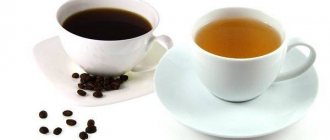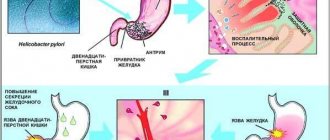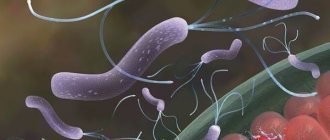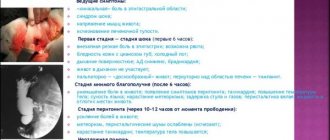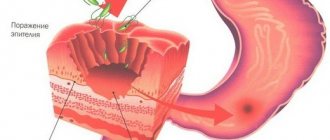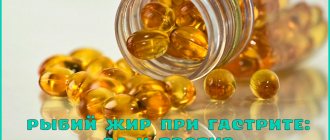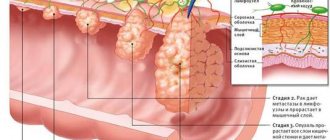What injections are given for stomach ulcers?
For open gastric and duodenal ulcers, more than 1-2 groups of drugs are used simultaneously.
Thanks to this, greater effectiveness of treatment is achieved due to the combined action of medications. In addition, their combinations are selected in such a way that they enhance each other’s effects. The list of medications depends on the severity of the disease and accompanying symptoms. It may include:
- painkillers - Analgin;
- antispasmodics - No-shpa;
- histamine receptor blockers - Ranitidine, Kvamatel;
- proton pump inhibitors - Omeprazole, Lansoprazole;
- antiemetics - Cerucal, Metoclopramide;
- antibiotics - Clarithromycin, Amoxicillin;
- agents that stimulate mucosal healing - Solcoseryl, Actovegin.
Let us consider in detail the most popular medications prescribed to almost all patients during the acute period of the disease.
Solcoseryl
The drug belongs to the biogenic stimulants. Its action is aimed at improving metabolic processes and increasing oxygen saturation of tissues. As a result, activation of regeneration of damaged areas is observed.
Solcoseryl for stomach ulcers is prescribed for the purpose of scarring the ulcerative surface.
Injections of the drug are well tolerated, only in rare cases allergic reactions are observed. The reason for this is the composition of Solcoseryl. It contains dialysate from the blood of dairy calves, which has a biogenic effect.
The solution can be administered intravenously and intramuscularly. The choice of method of administration is made by the doctor after assessing:
- depth of ulcerative processes;
- frequency of disease relapses;
- the general condition of the patient, including age and the presence of concomitant chronic diseases.
The advantage of the drug is its ability to be used with other antiulcer drugs.
Also, treatment with Solcoseryl can continue during the recovery period after the acute condition has resolved.
Kvamatel
The drug contains as an active substance a blocker of H2-histamine receptors - famotidine. It reduces the basal production of hydrochloric acid, and also inactivates its secretion mediated by external stimuli. As a result, the environment becomes less acidic, which reduces the effect of pepsin. This leads to the cessation of the corrosive effect of gastric juice on the gastric mucosa.
Kvamatel is often prescribed in complex treatment. It helps to enhance the antibacterial effect of drugs used to eliminate Helicobacter pylori infection. The regenerative ability of the mucous membrane also increases, especially when using regenerants and reparants.
A feature of famotidine is the lack of influence:
- for bowel movements;
- enzymatic function of the pancreas;
- blood circulation in the portal system and in the vessels of the liver.
The standard dose is 20 mg every 12 hours.
The drug is administered only intravenously at a slow speed:
- intravenous injection - about 2 minutes;
- infusion - 15-20 minutes.
Since Kvamatel is produced in the form of a lyophilisate, it requires preliminary dissolution. The solvent used is saline solution (0.9%) sodium chloride, ampoules of which are included with the active substance (in one package). But other colorless transparent solutions of substances that do not interact with famotidine can also be used.
Ranitidine
The drug belongs to the H2-histamine receptor blockers. It has a similar effect to Kvamatel:
- normalizes the pH of the stomach contents due to suppression of HCl production;
- reduces pepsin activity.
It is used not only for the treatment of peptic ulcers, but also as a premedication before surgery on the stomach.
The dosage and duration of therapy is determined by the gastroenterologist depending on the patient’s medical history.
Important! Abruptly stopping the use of ranitidine may lead to an exacerbation of stomach ulcers.
Injections of the drug can be given:
- intramuscularly;
- intravenously;
- infusion.
Regardless of the method chosen, the solution should be administered slowly.
Positive aspects of treatment
In the treatment of ulcers, Solcoseryl performs important functions, because in addition to rapid healing, the medication is able to improve the redox reactions of the intestines. The latter process occurs due to the activation of specific enzymes by the main substance of Solcoseryl.
Treatment improves the patient's appetite
Other advantages of the drug in the treatment of ulcers:
- prevention of tissue death and the development of oxygen deficiency;
- provoking the growth of fibrin and a new layer of epithelium of the organ mucosa;
- increasing the rate of recovery of affected cells;
- lifting your mood, increasing sleep and appetite;
- the possibility of combining injections with antibacterial treatment of the disease;
- improves a person’s overall well-being by influencing the entire body at once;
The drug stimulates blood flow in the vessels
- stimulation of blood supply in the vessels that are located in the area of formation of ulcerative areas;
- the risk of developing an allergic reaction to the components of the medication is extremely low;
- fast regeneration.
What is solcoseryl
In addition to the medications given above as additional injections, modern medicine offers a special drug. The remedy produces a quick positive effect, which explains its endless popularity among people with a sick stomach or developing duodenal ulcers.
We're talking about solcoseryl. This drug of biogenic nature is considered the best on the medical market. The injections were first used in Switzerland; the blood of calves is used for production. This fact does not change patients’ opinions about the drug. In addition to the controversial component, the composition includes other important substances:
- purine;
- amino acids;
- polypeptides.
These elements represent a unique composition of substances that ensures, maintains, and restores proper metabolism. The main object becomes the intestines. Under the influence of the drug, enzymes are activated that help the body carry out the redox process.
Solcoseryl for stomach ulcers makes a strong impression on patients: the effectiveness of the medicine is amazing, patients say that after a week of injections the pain syndrome decreases and spasms disappear.
It all starts small
Peptic ulcer disease is a chronic disease with a polycyclic course, characterized by the occurrence of an ulcerative defect in the mucous membrane of the stomach and duodenum.
An ulcer of the digestive organ, as a rule, is a consequence of severe inflammation of the walls of the stomach. May be the result of untreated Helicobacter pylori gastritis
. There is an ulcer as an independent disease, and there are secondary symptomatic and gastroduodenal ulcers, provoked by stress, circulatory disorders, taking certain anti-inflammatory drugs, etc.
Gastritis is an inflammation of the stomach lining. Due to a pathological process in the digestive organ:
- nutrients that come with food are less easily absorbed;
the activity of all systems is disrupted, metabolism suffers;
- sometimes this leads to increased acidity, which destroys the walls of the stomach;
- sometimes leads to a lack of acid, as a result of which food is poorly digested, stagnates in the stomach, and enters the intestines with a delay.
The result of advanced gastritis, as a rule, is a stomach and duodenal ulcer or atrophy of the gastric mucosa, or cancer.
Release forms and composition of the drug
The drug looks like a solution of the medicinal composition in darkened glass ampoules with 2 or 5 ml. 1 ml contains 42.5 mg of dialysate from the blood of young bulls without protein components mixed with sterile deionized water. Ampoules are placed in cardboard packages of 5 or 25 pieces in contour blisters with cells made of polymer material.
Composition of Solcoseryl in ampoules:
| Substance | Content in 1 ml, mg |
| Blood dialysate from healthy calves | 42,5 |
| Water for intravenous injections | Up to 1 ml |
Deproteinized dialysate is obtained by separating an extract containing blood serum and substances with low molecular weight: amino acids, glycoproteins, nucleotides, etc. The resulting mixture accelerates metabolism by activating oxygen transport to all important organs. And an increase in the rate of glucose utilization leads to an increase in internal energy reserves.
Properties and mechanism of operation
The medicine is based on the active substance solcoseryl. It is dialysate (deproteinized) of the blood of dairy calves. Among the auxiliary components, the solution for intramuscular or intravenous administration includes only injection water. The liquid in the ampoule must be completely transparent and free of impurities. Sometimes the color may change to a yellow tint. The solution smells like meat broth.
The drug Solcoseryl belongs to the group of tissue repair stimulators due to the content of a large number of low molecular weight ingredients in the cell mass and blood serum of calves. This includes amino acids and nucleosides necessary for normal and natural cell repair, as well as glycoproteins and nucleotides.
The drug is administered intramuscularly
With its help, it is possible to better and faster deliver oxygen and glucose to cells in a state of hypoxia. In addition, the ampoule of the solution is an activator of the regenerative properties of tissues. Due to the presence of a large number of different forms, the drug Solcoseryl can be used in completely opposite cases. But when diagnosing pathologies of internal organs, duodenum, ulcers or gastritis of the stomach, the drug must be administered only intramuscularly.
Due to the content of natural ingredients, doctors are not able to accurately study the mechanism of action of the drug.
Directions for use and dosage
As a complex treatment for ulcerative lesions of the gastrointestinal tract, Solcoseryl is prescribed in the form of an injection solution and tablets. Both dosage forms penetrate the gastrointestinal tract and provide an active direct effect at the site of damage to the mucous membranes.
Injections
Solcoseryl injection solution is prescribed for intramuscular and intravenous administration. The solution has a yellowish-straw hue, a transparent consistency and the smell of beef broth. The active component of the solution is deproteinized dialysate from the blood of young calves; 1 ml of solution contains 42.4 mg of purified calf blood. The solution complements saline solution for injection. The drug in the form of injections is dispensed in ampoules of 2 and 5 ml in packs of 5 pcs.
The therapeutic effect of Solcoseryl injections for ulcers is achieved due to the effect of the active component on the biochemical and physical properties of the gastrointestinal tract, namely, restoration of affected tissues, activation of internal processes of regeneration of mucous membranes. At the same time, not only the condition of the stomach and intestines improves, but also the liver, organs of the hepatobiliary system, and hematopoiesis. The body is also cleansed of toxins and waste.
The duration of injection varies from 1 to 2 months; it is during this period that significant therapeutic results can be achieved. According to the results of endoscopic studies, healing of ulcerative defects of the mucous membranes and improvement of tissue trophism are noted. For a recurrent ulcer, the course of treatment is 2-3 weeks, 2 injections per week, then take a break and continue the course. The instructions suggest the following treatment regimen:
- the first day after an exacerbation - 1 ampoule of 2 or 5 ml;
- after two days the dosage is doubled;
- third day – daily dose 10 ml;
- other days – save 10 ml once.
If the patient has a complicated allergic history, a test dose of no more than 0.5 ml is given before use. For 1 hour and after administration of the drug, it is prohibited to take any other medications. The use of Solcoseryl in injection ampoules helps cure peptic ulcer disease at an early stage in the absence of complications.
Oral administration
The active component is a protein-free extract of the blood of young calves in powder form; the dragee has a capsule that opens in the stomach after administration. 1 tablet contains 40 g of active ingredient. The course of treatment is 14-21 days, 3 capsules per day. For chronic ulcers during remission, 1 capsule per day for a month is sufficient. Dragees are washed down with plenty of water.
Solcoseryl dragee for gastric and duodenal ulcers is manufactured in Macedonia, India and Switzerland; the standard treatment regimen varies depending on the form of ulcerative-erosive disease of the gastrointestinal tract.
The course of therapy with any pharmacological forms of the drug depends on the severity of the disease, general medical history, age of the patient, as well as current drug therapy for other diseases. The first therapeutic results are noticeable only after a course of continuous use.
How injections are given
During the first day, during exacerbation of the disease, 2 ml of solution is administered. Within 2-3 days. the dosage of the medicine is doubled. Subsequent therapy involves the administration of 6 ml of drugs per day. To relieve spasms and pain during the first days of treatment, antispasmodics, for example, No-shpa, Papaverine, can be prescribed.
To prevent the development of allergies during the first administration of the medicine, a minimum amount of solution is used - 0.5 ml.
Noticeable improvements are observed already on day 4. Addiction to Solcoseryl with long-term use has not been recorded.
During an exacerbation (especially in patients with atrophy), three 3-ml doses of the drug may be prescribed. After remission occurs, the frequency of injections is reduced. When carrying out medical therapy, it is important to follow a special diet.
For preventive purposes, during remission, drugs are administered intramuscularly once a day. If you follow the doctor’s recommendations, it will be possible to cure ulcerative pathologies of the gastrointestinal tract at an early stage.
Pharmacological properties
Solcoseryl (ampoules) instructions for use recommend using it to stimulate the growth of new cells and normalize metabolic reactions. The entire scope of application is very wide. Solcoseryl has a positive effect on all body functions. The drug contains a set of compounds with a molecular weight of up to 5000 daltons, the properties of which have been only partially studied to date.
List of main actions of Solcoseryl:
- reduces oxygen deficiency in cells;
- increases the activity of phosphorylation enzymes;
- enhances the exchange of phosphates – energy sources;
- accelerates the breakdown of beta-hydroxybutyrate and lactates;
- increases blood circulation in tissues and the intensity of energy-intensive regeneration processes.
The medical effectiveness of the drug has not been proven due to the lack of traditional research aimed at studying its properties.
The main sales market for Solcoseryl is Russia and the CIS countries, where about 70% of total production is sold.
Effect on the body
Solcoseryl used for injection was obtained through multi-stage laboratory studies. The drug contains only low-molecular compounds that can restore cellular structure and influence metabolic processes.
Based on the results of monitoring the control groups, it was noted that the drug has the following effect:
- accelerates the oxidation reaction;
- increases the speed of metabolic processes;
- stimulates tissue regeneration;
- promotes the transport of glucose into cells;
- activates collagen synthesis;
- increases oxygen saturation;
- stimulates cell migration.
All of the above really contributes to tissue rejuvenation and renewal. But using a biologically active drug without a doctor’s prescription is dangerous!
The product in action
If the doctor prescribes and recommends for use the Swiss drug Solcoseryl, the instructions for use, injections for stomach ulcers (as Solcoseryl is sometimes called) should be studied in more detail.
It has been proven by practice that in most cases, injections for stomach ulcers (Solcoseryl) in the general treatment regimen significantly improve the effectiveness of therapy. Unpleasant sensations such as nausea and heartburn noticeably decrease within a week. The pain that occurs (a characteristic sign of a peptic ulcer) subsides and disappears after 1-2 weeks.
And in general, the general well-being of patients improves greatly: appetite appears, good mood appears, irritability and nervousness disappear.
Indications for use
The drug Solcoseryl is prescribed in neurology, gynecology, traumatology, gastroenterology, dermatology, for congestion in peripheral vessels.
In the therapeutic regimen being drawn up for a particular problem, Solcoseryl is not used in the singular.
Its use significantly increases the effectiveness of treatment, which has been repeatedly proven in practice.
Based on the characteristics of Solcoseryl, it is prescribed for the treatment of a number of diseases:
- trophic ulcers;
- 2nd and 3rd degree burns;
- gangrene stages 1 and 2;
- injuries to the eye corneas;
- radiation injuries present on the skin;
- ulcers of the stomach and duodenum;
- hemorrhagic strokes;
- ischemic heart diseases;
- disorders of blood circulation in the brain and limbs caused by senile dementia, vascular obstruction, and venous pathology;
- bedsores;
- mucosal erosions;
- frostbite.
Use during pregnancy and breastfeeding
During pregnancy, Solcoseryl is not prescribed, because the active compound penetrates the placental barrier and can cause intrauterine abnormalities in the development of the fetus. The drug is used only in extreme cases, when the therapeutic effect for the mother outweighs the potential risk to the embryo.
Solcoseryl is not recommended for nursing women. Hemoderivat accumulates in breast milk and enters the baby's body. If injections are necessary for the patient, the baby is transferred to artificial feeding.
Use for children
It is not used to treat children due to the lack of data on the effect of the active substance on the growth and development of the body in childhood and adolescence.
Instructions
Release form, composition and packaging
Gel for external use
homogeneous, almost colorless, transparent, dense consistency, with a characteristic light smell of meat broth.
Excipients: methyl parahydroxybenzoate, propyl parahydroxybenzoate, sodium carmellose, propylene glycol, calcium lactate pentahydrate, water supplement.
20 g - aluminum tubes (1) - cardboard packs.
pharmachologic effect
Solcoseryl is a deproteinized hemodialysate containing a wide range of low molecular weight components of cell mass and blood serum of dairy calves with a molecular weight of 5000 D (glycoproteins, nucleosides and nucleotides, oligopeptides, amino acids).
It has been established that Solcoseryl has the following properties:
- improves the transport of oxygen and glucose to cells under hypoxic conditions;
- increases the synthesis of intracellular ATP and promotes an increase in the proportion of aerobic glycolysis and oxidative phosphorylation;
- activates reparative and regenerative processes in tissues;
- stimulates the proliferation of fibroblasts and the synthesis of collagen in the vascular wall.
Solcoseryl gel does not contain fats as auxiliary components, making it easy to wash off. Promotes the formation of granulation tissue and the elimination of exudate.
From the moment fresh granulations appear and the wound dries, it is recommended to use Solcoseryl ointment, which contains fats as auxiliary components and forms a protective film on the wound surface
Indications
Solcoseryl gel/ointment is used in the following cases:
- minor damage (abrasions, scratches, cuts);
- 1st and 2nd degree burns (sunburn, thermal burns);
- frostbite - difficult-to-heal wounds (including trophic ulcers and bedsores).
For the treatment of trophic lesions of tissues of various origins, Solcoseryl is used only after removal of necrotic tissue from the wound.
Solcoseryl gel is used in the initial stage of treatment and is applied to fresh wounds, wounds with wet discharge or ulcers with weeping phenomena.
Solcoseryl ointment is used primarily for the treatment of dry (non-wetting) wounds.
Dosage regimen
Solcoseryl is used topically, applied directly to the wound surface after preliminary cleansing of the wound using a disinfectant solution.
Before starting treatment of trophic ulcers, as well as in cases of purulent infection of the wound, preliminary surgical treatment is necessary.
Solcoseryl gel is applied to fresh wounds, wounds with wet discharge, and ulcers with signs of weeping in a thin layer on a cleaned wound 2-3 times a day. It is recommended to lubricate areas where epithelization has begun with Solcoseryl ointment. The use of Solcoseryl gel is continued until pronounced granulation tissue forms on the damaged skin surface and the wound dries out.
Solcoseryl ointment is applied in a thin layer to a cleaned wound 1-2 times a day. Solcoseryl ointment can be used under bandages. The course of treatment with Solcoseryl ointment continues until the wound is completely healed, its epithelization and the formation of elastic scar tissue.
For the treatment of severe trophic damage to the skin and soft tissues, the simultaneous use of parenteral forms of Solcoseryl is recommended.
Side effect
In rare cases, allergic reactions in the form of urticaria and marginal dermatitis may develop at the site of application of Solcoseryl. In this case, you must stop using the drug and consult a doctor.
A short-term burning sensation may be observed at the site of application of Solcoseryl gel. If the burning sensation does not go away for a long time, the use of Solcoseryl gel should be abandoned.
Contraindications for use
- hypersensitivity to one of the components of the drug.
Carefully _
should be used if you are predisposed to allergic reactions.
Use during pregnancy and breastfeeding
special instructions
Solcoseryl should not be applied to a contaminated wound, since it does not contain antimicrobial components.
If you experience pain, redness of the skin near the site where Solcoseryl was applied, secretion from the wound, or increased temperature, you should immediately consult a doctor.
If, when using Solcoseryl, healing of the affected area is not observed within 2-3 weeks, you should consult a doctor.
Overdose
Drug interactions
The interaction of Solcoseryl with other topical medications has not been established.
Storage conditions and periods
At a temperature not exceeding 30° C. Keep out of the reach of children. Shelf life: 5 years from the date of production. Do not use after the expiration date stated on the package.
Contraindications
Solcoseryl in ampoules, like most other medications, can cause specific reactions due to the likelihood of increased individual sensitivity.
Contraindications from the instructions for use:
- age group up to 18 years;
- pregnancy and breastfeeding;
- recorded intolerance to blood lysates, parahydroxybenzoic acid compounds and simple benzoic acid;
- severe cardiac dysfunction;
- water retention in body tissues;
- anuria or oliguria;
- pulmonary edema.
For diabetes mellitus, Solcoseryl should be used with caution. 1 ampoule contains 7.75 g of dextrose.
How to administer solcoseryl correctly
The ways of introducing the drug into the body are:
Greater preference is given to the second method. Instructions for use include a number of points. On the first day of treatment, the patient is given an ampoule with a volume of two milliliters. On the second day, the dose is doubled and administered intramuscularly. On the third day, the medicine is introduced into the body in the amount of six milliliters.
For the remaining course, lasting eighteen days, the attending physician continues to administer the drug in six milliliters doses, the final dose does not change.
If the injections are administered correctly, the patient feels better already on the fourth day. With each dose of the drug the condition improves. The medications described do not cause addiction. In particular, solcoseryl.
An integrated approach to the treatment of gastrointestinal pathologies involves normalizing the functioning of the whole organism. "Solcoseryl" for gastritis helps to cope with inflammation of the mucous membrane during gastric erosion, restores blood circulation and tissue nutrition, promotes the healing of ulcers and enhances the body's defense response in general.
IT IS IMPORTANT TO KNOW! Even “advanced” ulcers or gastritis can be cured at home, without surgery or hospitals. Just read what Galina Savina says and read the recommendation.
Instructions for use
Solcoseryl is a drug that improves metabolic processes, accelerates the transport of oxygen and glucose, and stimulates tissue repair (regeneration). By its nature, it is a biogenic product obtained from the blood of dairy calves, purified from protein mass. The medicine is prescribed externally (in the form of gels, jellies, creams, pastes) and administered by injection (intramuscular or intravenous).
The injection solution is sold in sealed cardboard boxes - 10 ampoules (2 ml) in one package.
Indications
The drug is used in neurology, traumatology, dermatology, gastroenterology, gynecology, as well as for congestion in peripheral vessels. When drawing up a treatment regimen for functional pathologies, solcoseryl is not the only therapeutic drug, but its administration significantly increases the effectiveness of therapy (as proven by many years of medical experience).
Since the medicine has the ability to restore tissue structure, heal wounds, and saturate cells with oxygen, it is included in the therapeutic course for the complex treatment of the following diseases:
- trophic ulcers;
- burns (2nd and 3rd degree);
- gangrene (stage 1-2);
- radiation damage to the skin;
- cornea injuries;
- stomach and duodenal ulcers;
- strokes (hemorrhagic and ischemic forms);
- cardiac ischemia;
- cerebrovascular accident (senile dementia);
- circulatory disorders in the extremities (vascular obstruction, venous pathologies);
- bedsores;
- erosion of the mucous membrane.
Treatment regimens and dosage
The dosage and method of administration of the drug depend on the goals of treatment and the type of disease:
- Pathologies of peripheral arteries 2 degrees. The medication is administered as an infusion of 250 ml per day at a rate of 20-40 drops/min. Drug therapy continues for 20 days. If the disease has reached stage 3, injections are given at a dosage of 20 ml.
- Trophic ulcers, burns, bedsores. After the injections, a dressing is carried out soaked in Solcoseryl ointment to enhance tissue regeneration. When the patient's condition improves, the injections are stopped. The dosage is not indicated, because it depends on the area of the skin affected. For chemical burns, a single injection of the drug with a volume of 20-50 ml is carried out.
- Varicose veins with severe tissue trophic disorders. Injections are made into a vein 3 times a week, 10 ml. The course of therapy lasts 4 weeks.
- Ulcerative lesions of the digestive system. The drug is administered intramuscularly once a day, 20 mg of the active substance.
- Cerebral circulation disorders, traumatic brain injuries. The course of treatment is 10 days, the patient receives 10 to 20 ml of medication daily. After this, within a month the dosage of the drug is reduced to 2 ml per day.
- Prevention of ischemia. 5 mg of active substance is excreted per day.
- Disorders of the female reproductive system. Droppers of 250 ml are given for an hour.
When it is impossible to administer the drug intravenously, injections are given into the deep layers of muscles. In this case, the dosage of the solution should not be more than 2 ml per day. This limitation is due to the high risk of developing allergies, which are accompanied by rashes and severe itching. Swelling remains at the injection site for 2-3 days.
Methods of drug administration
The drug is prescribed intravenously - a slow drip. The medicinal composition is diluted with saline solution or 5% dextrose in proportions 1:1). For diseases of large peripheral vessels (stage 2 according to Fontaine), the medicine is administered as an intravenous infusion solution (20-40 drops per minute) 250 ml daily. One course – 20 procedures.
For peripheral vascular diseases stage 3 (according to Fontaine), injections are prescribed - 20 ml daily.
For varicose veins (with pronounced signs of trophic disturbances), solcoseryl is prescribed 3 times a week, 10 ml intravenously. The duration of the course is 4 weeks (no more!).
Treatment of trophic ulcers, burns, and bedsores involves a combination of injections and healing bandages soaked in ointments based on Solkoserial. After the clinical picture improves, the medicine continues to be used only externally.
If difficulties arise during the administration of the drug, intramuscular injections are prescribed (dosage - 2 ml per day). However, with this method of treatment, a moderate allergic reaction may develop, and in rare cases, severe itching and skin rashes. Swelling remains at the site where the needle was inserted for some time.
When treating chemical burns, 20-50 ml of the drug is administered once a day.
Contraindications
An absolute contraindication for injection administration of the drug is hypersensitivity to the components included in the drug, age under 18 years.
Solcoseryl is prescribed with great caution during pregnancy and is not prescribed during lactation. The ban on the use of the drug during pregnancy and breastfeeding is, rather, a precautionary measure, since there is no reliable data on the harmful effects of the drug
Pharmacokinetics
Obtaining reliable data on the absorption, distribution and excretion of the drug from the body is not possible. This is due to the fact that the active ingredient is hemodialysate containing blood components. Standard research methods do not allow collecting information on the pharmacokinetics of the drug.
Solcoseryl – compatibility with alcohol
In order not to create health risks, it is best to completely avoid alcohol-containing drinks during the treatment period. If injections with Solcoseryl were carried out as a course, then you will have to give up alcohol for a period of three days to a month - as determined by the attending physician.
Description and features of the medicine
The action of the drug "Solcoseryl" is aimed at improving metabolic processes, accelerating the transfer of oxygen and glucose in the blood to damaged tissues, which stimulates their regenerative function. This biogenic medicine is obtained from the blood of newborn calves, which is previously purified in a special way from the protein mass. This release of the extract from the reactive protein makes it possible to reduce the antigenic effect of the drug.
The drug saturates tissues with purine and amino acids.
Medicine is prescribed in the form of gels, jellies, creams, pastes for external, that is, local use. Injection options are administered intramuscularly or intravenously. For open gastric ulcers, only Solcoseryl injections are used. You can take pills. The injection solution is offered for sale in ampoules of 2 ml, of which there are 10 units in one box.
The main advantage of Solcoseryl is its ability to saturate damaged tissues with the help of the active ingredient with substances such as purine and amino acids. These components are needed to ensure proper metabolism. The presence of polypeptides allows you to maintain the normal functioning of tissues in the body.
A combination of biogenic injections and antibiotics is acceptable.
Side effect
Solcoseryl has a natural biogenic composition, so it is well tolerated. During production, proteins that have an antigenic effect are removed from the concentrate, so adverse reactions are rarely observed.
A rare number of patients experience:
- allergic rash in the form of urticaria;
- slight increase in body temperature to subfebrile levels;
- Swelling and redness may be observed at the injection site.
If side effects occur, the injections are canceled and symptomatic therapy is prescribed.
Overdose
To date, there have been no cases of drug overdose.
Side effects and overdose
The instructions for use do not contain information regarding exceeding doses of the drug. Allergy tests should be done before use. To do this, inject 0.5 ml intramuscularly and monitor the reaction for 24 hours. Possible adverse events may include:
- redness;
- rash;
- swelling at the injection site;
- itching;
- increased body temperature;
- difficulty breathing;
- anaphylactic shock.
Return to contents
Special Recommendations
Before prescribing Solcoseryl solution, the doctor must carefully study the instructions for it. There are several specific recommendations, which include:
- If negative pathological reactions occur during the use of the drug, symptomatic therapy is prescribed.
- Despite the fact that no teratogenic effect on the fetus of the active component of the drug has been identified, its use for pregnant and breastfeeding women is not recommended.
- Solcoseryl solution for parenteral administration is incompatible with some drugs of other pharmacological groups, in particular parenteral forms of Ginkgo Biloba, bencyclane fumirate, naftidrofuril.
- The active component of the drug does not directly affect the functional state of the nervous system.
In the pharmacy chain, a solution for parenteral administration of Solcoseryl is available with a prescription. Its independent use without a doctor’s prescription is prohibited.
Metronidazole for gastritis
Metronidazole for gastritis is prescribed, as a rule, when gastritis is associated with infection with Helicobacter pylori bacteria.
Metronidazole was synthesized about 60 years ago, that is, by the time the role of Helicobacter bacteria in the development of gastritis was discovered (mid-80s of the twentieth century), this drug was already a “solid” 30 years old.
However, metronidazole is still used as part of complex drug therapy for Helicobacter-associated gastritis in combination with other antibiotics.
Depending on what treatment regimen for gastritis the doctor chooses, metronidazole will have to be taken for 7 or 10 days. In this case, the duration of treatment is influenced by which antibacterial drug will be used in combination with metronidazole, since eradication of Helicobacter pylori involves the prescription of 2 antibiotics + a drug from the antacid group.
In addition to metronidazole, one of the following drugs is usually used for this treatment: clarithromycin, amoxicillin or tetracycline.
In any case, metronidazole is prescribed at a dose of 500 mg 2 times a day.
On the other hand, despite the high effectiveness of metronidazole, the “age” of the drug is reflected in the fact that its use is associated with the development of many side effects, among which we can primarily highlight:
- nausea
- vomit
- headache
- sleep disorders
- dizziness
- depression
- increased excitability
- metallic taste in mouth
- hives.
Analogs of Solcoseryl injections
The drugs Curantil and Actovegin are similar in composition and therapeutic effect to Solcoseryl solution.
Solcoseryl and Actovegin injections - which is better?
It is difficult to determine the difference, since both drugs are considered analogues.
- The main active ingredients are based on the blood of calves and are intended to restore tissues and fill them with oxygen.
- The instructions for using Actovegin allow the use of the solution for various eye diseases. It is often prescribed to patients who have violated the rules for using contact lenses.
- If we compare both drugs in terms of cost, then the price for them ranges from 150 to 1,700 rubles .
- Each of the medications copes well with different skin lesions.
Only an experienced specialist can make a decision on prescribing a particular medicine.
"Atropine"
Ampoules with injection medicine indicated for severe pain during an exacerbation of the disease. It affects nerve endings, thereby quickly relieving pain. The dosage is determined by the doctor depending on the intensity of the pain and the patient’s condition. Not prescribed to people with cardiovascular problems. Not allowed during pregnancy, may cause fetal tachycardia.
Mexidol
Analogue of Solcoseryl in terms of pharmacological effects on the human body. The active substance used is ethylmethylhydroxypyridine succinate 50 mg in 1 ampoule. Packaged in cardboard boxes of 5, 10 and 50 pieces. The drug has antihypoxic, nootropic, anxiolic and anticonvulsant effects. Protects cell membranes.
Mexidol stimulates the body's resistance to stressful situations and to the effects of many negative factors: shock, hypoxia, ischemia, alcohol poisoning and overdose of antipsychotic drugs. Medicines in succinate compounds are biologically related to the body, which determines their high absorption and active effect on many diseases.
Antibacterial drugs
Medicines from the group of antibiotics help destroy Helicobacter pylori, the main causative agent of gastritis and peptic ulcers. Most often, it is this bacterium that causes the development of the disease.
Important! They can be prescribed in tablet or injection form.
Treatment is carried out using the following drugs.
- Clarithromycin. The main antibiotic prescribed during an exacerbation of an ulcer. It is resistant to the acidic environment of the stomach, is slowly absorbed and has a long elimination period. Most often, a two-time dose is recommended. Duration of treatment – 6…14 days.
- Amoxicillin. Semi-synthetic antibiotic. Quickly penetrates into affected tissues. Has a bactericidal effect.
- Metronidazole. It has antimicrobial and antiprotozoal effects. Contraindications for use: hypersensitivity to the active component, organic damage to the central nervous system, liver failure.
- Tetracycline. Antibiotics with antimicrobial action. Intended for systemic use. It has a negative effect on the microflora of the stomach and gastrointestinal tract as a whole. During therapy, the formation of dysbiosis and other disorders is possible.
Important recommendations from the instructions
The product is also available in other variations: gel, ointment, paste, tablets and solutions for infusion. The price for all items is different. Thus, the cost of injections ranges from 1080-2100 rubles.
The manufacturer claims that the rate of tissue regeneration and restoration is influenced by the process of activating metabolic processes and improving liver function. In addition, after completing such a course, a person will be able to remove accumulated toxic substances from the body. The duration of therapy depends on the patient's age, the form and stage of the disease, as well as other associated problems.
A doctor must prescribe a course of treatment
Only a physician can prescribe an adequate and correct course of treatment in each individual case.
Usually the healing process occurs within 1-2 months. In case of a violent reaction of the body to seasonal surges in the form of relapses, the patient is prescribed a 2-week treatment course. The solution must be administered every 1-2 days.
Mezim for gastritis
Mezim for gastritis is used when the disease is accompanied by low acidity. Mezim is a complex preparation that contains 3 enzymes:
- lipase
- trypsin
- alpha amylase.
Thanks to these enzymes, the process of digesting fats, proteins and starch is facilitated, and trypsin also ensures correction of the acidity level of gastric juice.
Mezim plays a big role in eliminating dyspeptic symptoms (nausea, bloating, feeling of fullness in the stomach), which can persist for quite a long time even after successful eradication of Helicobacter pylori.
For adults, Mezim is usually prescribed 1 tablet 3 times a day (the duration of the course of treatment is determined by the doctor).
It should be remembered that it is not recommended to take antacids and iron supplements (used to treat anemia) simultaneously with treatment with Mezim, since Mezim and these drugs, when taken simultaneously, significantly reduce the therapeutic effect of each other.
Terms, conditions of sale and storage
Solcoseryl is included in List B of medicines and does not require a strict prescription from a specialist. However, uncontrolled use for a long period is unacceptable. You should follow the recommendations of the supervising physician and periodically assess the state of the body systems using instrumental methods.
The drug should be kept in an area closed to small children at an ambient temperature of up to 25°C.
The product can also be kept in the refrigerator; this will not affect the healing properties.
Before administration, the ampoule with its contents should be warmed to room temperature.
Shelf life – 5 years from the date of production. After this period, Solcoseryl should not be used.
Expired ampoules must be disposed of along with household waste in specially designated areas.
Purpose of enterosorbents
With exacerbation of gastritis, as well as with the disease in remission, gastroenterologists often prescribe enterosorbents necessary for binding and removing toxic substances from the digestive tract. By removing and neutralizing some of the toxins, such drugs reduce their effect on the gastric mucosa. What medications with a sorption effect are indicated for the disease?
These drugs are used to remove toxins
Experts believe that the best remedy that does not have side effects on the body is Enterosgel. This drug binds and removes pathogenic microorganisms and waste, without interfering with the absorption of beneficial substances. Enterosgel for gastritis, taken according to the instructions, helps restore local immunity and regenerate the mucous membranes. It is important to remember that such a sorbent should be drunk separately from food.
Smecta has a good effect on eliminating toxins. This drug consists of several components that help eliminate diarrhea and flatulence. Smecta coats the gastric walls, thereby reducing the effect of acid on inflamed mucous membranes. Thanks to this property, Smecta eliminates pain in the epigastrium. It is advisable to drink the sorbent on an empty stomach, 1 hour before meals. For inflammation of the stomach, Smecta is taken one packet three times a day. It is important to remember that if the doctor has prescribed several medications, Smecta is taken separately, as it interferes with the absorption of other drugs.
The most effective drugs
Medicines for stomach ulcers should be taken in accordance with the established regimen. Diet is important during treatment. Because no drug will give the desired effect if you eat incorrectly. Treatment of stomach ulcers with medications is carried out comprehensively, using the following drugs.
Antibacterial drugs
- Clarithromycin. Resistant to the destructive effects of hydrochloric acid. It is quickly absorbed and distributes well in tissues. Clarithromycin is recommended as primary antibiotic therapy. Clarithromycin has contraindications. Prohibited for hypersensitivity, pigment metabolism disorders. Clarithromycin does not start during pregnancy (first trimester), during breastfeeding, or while taking certain medications.
- Amoxicillin. Bactericidal (bacteria-destroying) antibacterial agent. Has a wide spectrum of action. Amoxicillin for ulcers can be taken 2 times a day, not 4 times. Therefore, this antibiotic is often preferred. Prohibited for hypersensitivity. During pregnancy and lactation, you should drink only under the supervision of your doctor.
- Metronidazole. These treatment tablets are antimicrobial. Metronidazole destroys the DNA of parasitic microorganisms. Not prescribed for hypersensitivity, reduced number of leukocytes in the blood, diseases of the central nervous system, liver failure, pregnancy (first trimester), breastfeeding.
Antihistamines that reduce gastric acid secretion
These drugs for the treatment of stomach ulcers have the same effect. They normalize the level of acidity (which contains gastric juice) by inhibiting the synthesis of hydrochloric acid. Helps protect the mucous membrane for 12-24 hours.
Such medications include:
- Ranitidine,
- Nizatidine,
- Roxatidine,
- Famotidine,
- Cimetidine.
https://youtube.com/watch?v=_bPvYg06O2U
Each of the medications has contraindications. Therefore, only a doctor can prescribe a treatment regimen.
Gastroprotectors
These medications protect the mucous membrane from the damaging effects of acidic elements, alkalis, and enzymes.
- Sucralfate. Antiulcer agent. Envelops the walls of the stomach, adsorbs toxins and bacterial breakdown products. Forms a durable protective film.
- Solcoseryl. It is a powerful medicine. Helps restore the gastric mucosa and heal erosions. When taken, cellular metabolism improves.
- Biogastron. Has a pronounced anti-inflammatory effect.
- Actovegin. Promotes oxygen saturation of tissues. When taken, rapid restoration of damaged mucosal cells is ensured.
Antacids
Drug treatment of peptic ulcer involves taking drugs that neutralize hydrochloric acid.
- Maalox. By reacting with gastric juice, it neutralizes excess hydrochloric acid. In this case, re-production does not occur. Maalox helps normalize pH and protect the stomach walls. Maalox is not able to eliminate the true cause of ulcers. You should ask your doctor about any contraindications to the use of Maalox.
- Gastal. Maintains normal acidity for 2 hours. does not eliminate the cause of the pathology, but relieves pain and heartburn.
Anti-vomiting medications
These medications inhibit the influence of the vagus and splanchnic nerves, which are responsible for nausea, vomiting, and drooling. These include:
Medicines that relieve spasms
- Galidor. Perfectly relieves spasms of blood vessels and smooth muscles, helps lower blood pressure.
- Dibazol. Removes spasms, normalizes blood pressure. While taking it, the blood vessels in the brain dilate. Quickly relieves pain.
- No-shpa. It is the most popular antispasmodic drug. It is often prescribed to people who have hypersensitivity to pain medications.
Painkillers
Not so long ago, Analgin and Aspirin were used to relieve pain. But recent studies have confirmed the negative effect of these drugs on the mucous membrane. Therefore, it is recommended to take Paracetamol for stomach ulcers. The medicine for stomach ulcers has rather weak anti-inflammatory properties.
Paracetamol is contraindicated in chronic alcoholism and hypersensitivity to the components included in the tablets. Together with alcohol, Paracetamol has a destructive effect on the liver and kidneys.
Paracetamol should be taken with caution during breastfeeding and pregnancy.
Activated carbon or Smecta
Activated carbon and Smecta are strong adsorbents that absorb alkaloids of natural and synthetic origin, toxins of animal, bacterial, plant origin, poisons and other substances that destroy the walls of the stomach.
But you need to know that activated carbon is prohibited for gastric and duodenal ulcers. It is adsorbed on the surface of the ulcers and irritates the tissue. All this leads to an exacerbation of the pathology. A stomach ulcer may be accompanied by bleeding. Moreover, both quite strong and hidden. In this case, activated carbon enters the blood vessels and promotes the formation of blood clots. Therefore, for peptic ulcers, activated carbon is contraindicated.
Smecta is an enterosorbent of plant origin. Helps quickly cleanse the body of toxins and waste, bacteria and viruses. As you know, waste products of infection poison the body and have an irritating effect on the mucous membranes, including the stomach. After taking Smecta, all negative components accumulated in the body are eliminated naturally, and the intestinal microflora is not affected.
Smecta is well tolerated by adults and children, has a pleasant taste, and relieves heartburn well. It is not allowed to take the product with certain medications.
During pregnancy, Smecta is not prohibited. But you should drink it only after consulting a doctor.

